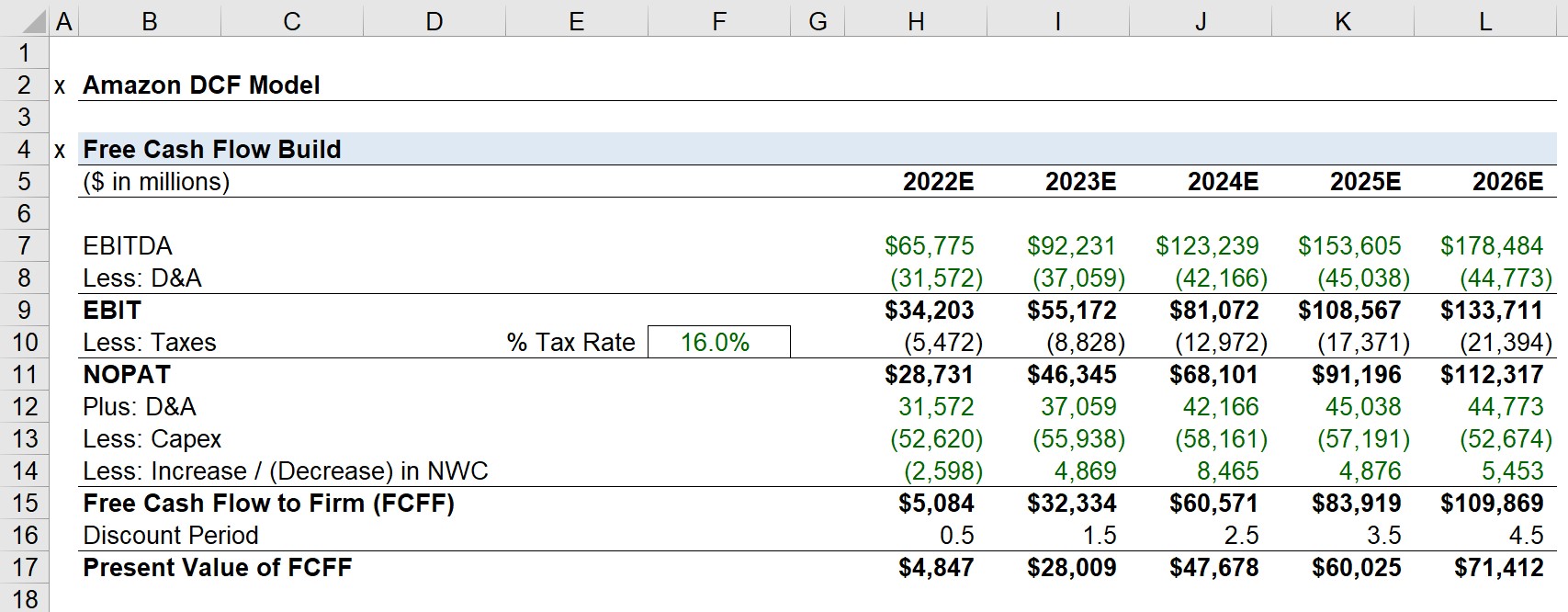

Finance
What Is A Liquid Capital Structure
Published: December 25, 2023
Learn about the importance of a liquid capital structure in finance and how it impacts business operations and financial stability.
(Many of the links in this article redirect to a specific reviewed product. Your purchase of these products through affiliate links helps to generate commission for LiveWell, at no extra cost. Learn more)
Table of Contents
- Introduction
- Definition of Liquid Capital Structure
- Importance of a Liquid Capital Structure
- Factors Affecting Liquidity in Capital Structure
- Strategies for Achieving a Liquid Capital Structure
- Case Studies on Companies with Effective Liquid Capital Structures
- Challenges and Risks Associated with Liquid Capital Structures
- Conclusion
Introduction
When it comes to managing finances, companies strive to find the optimal balance between stability and flexibility. One crucial aspect of financial management is the capital structure, which refers to how a company finances its operations through a combination of debt and equity. While there are various types of capital structures, a liquid capital structure is of paramount importance in the financial landscape.
In simple terms, a liquid capital structure is characterized by a company’s ability to convert its assets into cash quickly, efficiently, and without incurring significant losses. Liquidity is the lifeblood of any organization, allowing it to meet its short-term obligations, seize growth opportunities, and navigate through unforeseen financial challenges. Essentially, a liquid capital structure ensures that a company has enough cash and easily convertible assets to meet its financial needs.
The importance of a liquid capital structure cannot be overstated. It provides a strong financial foundation that enhances a company’s ability to weather economic downturns, adapt to changing market conditions, and respond to unforeseen circumstances. A well-structured and liquid capital base is vital for both profitability and sustainability.
Throughout this article, we will delve deeper into the concept of a liquid capital structure, exploring its definition, the factors that influence it, strategies for achieving liquidity, case studies on companies with effective liquid capital structures, and the associated challenges and risks.
Definition of Liquid Capital Structure
A liquid capital structure refers to the composition of a company’s financial resources and assets that are easily and quickly convertible into cash. It represents the degree of liquidity or the ability to meet short-term financial obligations without significantly impacting the business’s operations or incurring substantial losses.
Key components of a liquid capital structure include cash on hand, cash equivalents, marketable securities, and highly liquid assets. These assets can be readily converted into cash, allowing a company to smoothly meet its day-to-day expenses, repay its short-term debts, and take advantage of opportunities that arise.
There are various metrics used to assess the liquidity of a capital structure, such as the current ratio and the quick ratio. The current ratio measures the company’s ability to pay short-term liabilities using its current assets, while the quick ratio focuses on the ability to meet short-term obligations excluding inventory. Both ratios give insight into the company’s liquidity position and its ability to stay afloat in the short run.
Having a liquid capital structure offers several advantages to a company. First and foremost, it provides financial stability, offering a cushion against unforeseen events or downturns in the market. By having readily available cash or liquid assets, a company can cover operational expenses, maintain inventory levels, and meet its financial obligations on time, ensuring business continuity.
In addition, a liquid capital structure enables companies to seize growth opportunities. Whether it’s investing in research and development, expanding into new markets, or acquiring competitors, having ready access to cash allows companies to act swiftly and decisively. This agility can give businesses a competitive edge and position them for long-term success.
Importance of a Liquid Capital Structure
A liquid capital structure plays a crucial role in the financial health and success of a company. It ensures that a business can meet its short-term financial obligations promptly and effectively, while also providing the flexibility needed to take advantage of growth opportunities. Here are some key reasons why a liquid capital structure is important:
1. Financial Stability: A liquid capital structure provides a solid financial foundation for a company. By having readily accessible cash and liquid assets, a business can quickly respond to unexpected events, economic downturns, or changes in market conditions. This stability helps the company maintain operations, pay its employees, and meet its obligations even during challenging times.
2. Operating Efficiency: Having a liquid capital structure allows a company to operate smoothly and efficiently. It ensures that there is enough cash available to cover day-to-day expenses, such as inventory purchases, utility bills, and payroll. By avoiding cash flow shortages, the company can maintain a consistent level of operations and avoid disruptions that may negatively affect its reputation and customer relationships.
3. Flexibility and Agility: A company with a liquid capital structure has the flexibility to respond quickly to changing market dynamics and seize growth opportunities. Whether it’s investing in new technologies, expanding product lines, or acquiring competitors, having access to cash enables the company to act swiftly and decisively. This agility can give the business a competitive edge and position it for long-term success in a dynamic marketplace.
4. Better Negotiating Power: A company with a liquid capital structure often enjoys better negotiating power with suppliers, lenders, and investors. When a business has a strong cash position and the ability to meet financial obligations promptly, it can negotiate better terms and conditions, secure favorable payment terms, and potentially access additional funding sources. This can lead to improved profitability and lower borrowing costs.
5. Reduced Financial Risk: A liquid capital structure helps mitigate financial risk by providing a buffer against unexpected events or financial setbacks. It reduces the reliance on short-term borrowing or emergency funding, which can come with high interest rates or unfavorable terms. By having cash reserves and liquid assets, the company can weather financial storms with more confidence.
In summary, a liquid capital structure is important because it provides financial stability, enhances operational efficiency, enables flexibility and agility, improves negotiating power, and reduces financial risk. Companies that prioritize liquidity and maintain a well-balanced capital structure are better positioned to navigate challenges, capitalize on growth opportunities, and sustain long-term success.
Factors Affecting Liquidity in Capital Structure
Several factors influence the liquidity of a company’s capital structure. These factors determine the ease with which a company can convert its assets into cash and maintain a healthy level of liquidity. Understanding these factors is crucial for managing liquidity effectively. Here are some key factors that affect liquidity in a company’s capital structure:
1. Asset Composition: The composition of a company’s assets plays a significant role in its liquidity. Highly liquid assets such as cash, marketable securities, and accounts receivable can easily be converted into cash. Having a higher proportion of these liquid assets in comparison to illiquid assets like plant and equipment, long-term investments, or real estate can improve a company’s liquidity position.
2. Inventory Management: Inventory management is another critical factor impacting a company’s liquidity. Maintaining excessive inventory levels ties up capital and hampers liquidity. On the other hand, managing inventory efficiently and adopting just-in-time inventory practices can free up cash and enhance liquidity. By aligning inventory levels with demand, companies can minimize holding costs and ensure smooth cash flow.
3. Debt Structure: The debt structure of a company also influences its liquidity position. Companies with a larger proportion of long-term debt may face challenges meeting their short-term obligations, especially when cash flow is tight. On the other hand, a higher proportion of short-term debt can increase liquidity risk if the company is unable to meet its payment obligations. Striking the right balance between short-term and long-term debt is crucial for maintaining a liquid capital structure.
4. Profitability and Cash Flow: The profitability and cash flow of a company are closely tied to its liquidity position. A consistent positive cash flow from operating activities indicates a healthy liquidity position, as it demonstrates the ability to generate cash internally. Conversely, negative or volatile cash flow can put strain on liquidity. Profitability is also vital, as companies with sustainable profits are more likely to have stable cash flow and a stronger liquidity position.
5. Economic Conditions: Economic conditions, both at a macroeconomic level and within specific industries, can impact a company’s liquidity. During economic downturns or periods of financial instability, access to credit may become limited, making it more challenging to maintain liquidity. Understanding the broader economic environment and its potential impact on cash flow and availability of credit is crucial for managing liquidity effectively.
6. Management Decisions: Management decisions regarding capital allocation and investment strategies can significantly affect liquidity. For example, aggressive expansion plans or excessive capital expenditure can tie up funds and decrease liquidity in the short term. On the other hand, conservative spending and disciplined investment decisions can help maintain a healthier liquidity position.
By considering these factors and actively managing them, companies can optimize their liquidity position and maintain a well-balanced and liquid capital structure. Regular monitoring of these factors and adapting strategies accordingly is essential for ensuring adequate liquidity and financial stability.
Strategies for Achieving a Liquid Capital Structure
Establishing and maintaining a liquid capital structure is crucial for the financial health and success of a company. Companies can employ various strategies to achieve and optimize their liquidity position. Here are some effective strategies for achieving a liquid capital structure:
1. Efficient Cash Flow Management: Implementing sound cash flow management practices is essential for achieving a liquid capital structure. Companies should closely monitor and forecast their cash inflows and outflows, ensuring that there is adequate cash on hand to meet short-term obligations. This can be achieved through effective account receivable and payable management, timely collections, optimizing payment terms with suppliers, and reducing unnecessary expenses.
2. Optimizing Working Capital: Efficiently managing working capital is key to enhancing liquidity. This involves closely monitoring and managing the company’s current assets (such as inventory, accounts receivable) and current liabilities (such as accounts payable). By striking the right balance between these components, companies can maximize their cash conversion cycle and optimize liquidity.
3. Emphasizing Inventory Control: Controlling inventory levels is crucial for maintaining liquidity. Excessive inventory ties up capital and limits cash flow. Implementing inventory management techniques such as just-in-time inventory or adopting sophisticated inventory tracking systems helps optimize inventory levels and free up cash for other uses.
4. Diversifying Funding Sources: Relying solely on one source of funding can increase a company’s vulnerability to liquidity risks. Diversifying funding sources provides access to multiple channels of capital, reducing dependence on a single lender or investor. This can include exploring options such as bank credit lines, trade credit, venture capital, or issuing equity or debt instruments to increase financial flexibility and liquidity.
5. Managing Debt Levels: Maintaining a balanced debt structure is essential for achieving liquidity. Too much long-term debt may strain cash flow and limit liquidity, while a heavy reliance on short-term debt can increase the risk of default when cash flow is tight. Companies should evaluate their debt levels and ensure an appropriate mix of long-term and short-term debt to manage liquidity effectively.
6. Building Cash Reserves: Having sufficient cash reserves is crucial for liquidity management. Companies should prioritize building cash reserves by setting aside a portion of their profits for emergencies, unexpected expenses, or future growth opportunities. These reserves act as a safety net and ensure the company can meet financial obligations even during challenging times.
7. Regular Financial Analysis and Planning: Conducting regular financial analysis and planning is essential for achieving a liquid capital structure. This includes monitoring and assessing key liquidity ratios such as current ratio and quick ratio, analyzing cash flow statements, and conducting scenario planning to identify potential liquidity risks. By being proactive in financial planning, companies can identify potential challenges early on and take appropriate measures to maintain liquidity.
By implementing these strategies, companies can improve their liquidity position and achieve a well-balanced and liquid capital structure. It is essential to regularly evaluate and adjust these strategies as market conditions change and the company’s financial needs evolve.
Case Studies on Companies with Effective Liquid Capital Structures
Examining real-life examples of companies with effective liquid capital structures can provide valuable insights into successful strategies and practices. Here are two case studies of companies that have demonstrated an exceptional ability to maintain a healthy liquidity position:
Case Study 1: Apple Inc.
Apple Inc., a global technology company, is known for its strong cash position and effective liquidity management. Despite its substantial size and extensive operations, Apple has consistently maintained a liquid capital structure. The company achieved this by employing various strategies:
Cash Flow Management: Apple maintains a robust cash flow management system, closely monitoring its inflows and outflows. The company generates significant cash flow from its diverse product lines and services, which allows it to meet its short-term obligations promptly.
Working Capital Optimization: Apple has perfected its working capital management, utilizing efficient inventory control and supply chain management practices. The company manages its inventory levels closely, ensuring a balance between meeting customer demand and not tying up excessive capital in inventory.
Debt Management: Apple has strategically managed its debt levels, minimizing the reliance on external debt to finance its operations. This approach has helped the company maintain financial flexibility and reduce the risk associated with debt repayments.
Profitability and Cash Reserves: Apple’s consistent profitability has contributed to its strong liquidity position. The company generates substantial profits, allowing it to build and maintain substantial cash reserves. These cash reserves act as a cushion during challenging economic conditions.
Overall, Apple’s meticulous cash flow management, optimized working capital, prudent debt management, and consistent profitability have contributed to its effective liquid capital structure.
Case Study 2: Coca-Cola Company
The Coca-Cola Company, a global beverage giant, is another excellent example of a company with a well-managed liquid capital structure:
Efficient Cash Flow Management: Coca-Cola maintains an efficient cash flow management system, consistently generating significant cash flows from its worldwide sales and distribution channels. The company closely monitors its receivables and payables, allowing it to meet its obligations promptly.
Inventory Control: Coca-Cola has implemented effective inventory control practices to manage its beverage production and distribution. The company utilizes just-in-time inventory management techniques, ensuring minimal excess inventory and efficient use of working capital.
Diversified Funding Sources: Coca-Cola has a diverse range of financing options, including strong relationships with multiple lenders and access to capital markets. This diversification provides the company with financial flexibility and ensures a steady flow of liquidity when required.
Cash Reserves and Investments: Coca-Cola maintains substantial cash reserves and strategically invests excess cash in short-term liquid instruments. This approach ensures the company has readily available funds for its short-term obligations while also generating modest returns on its cash holdings.
The Coca-Cola Company’s efficient cash flow management, inventory control, diversified funding sources, and cash reserves have contributed to its effective liquid capital structure.
These case studies highlight the importance of diligent financial management, optimized working capital, and strategic decision-making in achieving and maintaining a liquid capital structure. By adopting similar strategies and practices, companies can enhance their liquidity position and ensure long-term financial stability.
Challenges and Risks Associated with Liquid Capital Structures
While a liquid capital structure offers numerous benefits, there are also challenges and risks that companies need to be aware of and actively manage. Understanding these challenges and risks is crucial for maintaining a sustainable and effective liquid capital structure. Here are some of the key challenges and risks associated with maintaining liquidity:
1. Cash Flow Volatility: Cash flow volatility poses a significant risk to a company’s liquidity. Factors such as seasonal fluctuations, changes in customer demand, or disruptions in the supply chain can impact cash inflows and outflows. Companies need to anticipate and plan for these fluctuations to ensure that they have sufficient cash reserves to cover any short-term gaps in cash flow.
2. Economic Downturns: During economic downturns or recessions, companies may face reduced access to credit, declining sales, and increased pressure on profitability. These economic challenges can strain a company’s liquidity position, making it more challenging to meet short-term obligations. It is crucial for companies to develop contingency plans, maintain healthy cash reserves, and explore alternative funding sources to mitigate the risks associated with economic downturns.
3. Rapid Growth or Expansion: While growth and expansion can be positive for a company, they can also put pressure on its liquidity. Rapid growth may require increased investments in inventory, equipment, and working capital, tying up cash resources. Companies need to carefully balance their growth plans with their liquidity requirements to ensure they have enough capital to sustain business operations during expansion phases.
4. Tightening Credit Conditions: If credit conditions become tighter or lenders become more risk-averse, companies may face challenges in obtaining external funding. This can limit their ability to borrow or refinance existing debt, potentially impacting their liquidity position. Developing relationships with multiple lenders, maintaining a solid credit history, and maintaining healthy financial ratios can help mitigate this risk.
5. Regulatory and Compliance Requirements: Complying with regulatory requirements can place strain on a company’s liquidity, especially if it requires significant financial resources or adjustments to operations. Non-compliance can result in fines, penalties, and reputational damage. Companies must allocate sufficient resources to ensure compliance while also managing liquidity effectively.
6. External Shocks and Disruptions: External shocks, such as natural disasters, geopolitical events, or global pandemics, can severely impact a company’s liquidity. These events can disrupt supply chains, increase costs, or lead to a decrease in customer demand. It is crucial for companies to have contingency plans in place to respond swiftly to such shocks and manage their liquidity effectively during times of crisis.
7. Inadequate Cash Management: Poor cash management practices, such as delays in receivables collection, excessive inventory levels, or inefficient payment processes, can negatively impact liquidity. Companies need to establish effective cash management policies, utilize technology and automation where appropriate, and regularly review and optimize their cash management practices to ensure the maintenance of a liquid capital structure.
Managing these challenges and risks requires proactive planning, regular monitoring of liquidity metrics, stress testing scenarios, and developing contingency plans. By effectively addressing these risks, companies can maintain a resilient liquid capital structure that supports their financial stability and long-term success.
Conclusion
A liquid capital structure is vital for companies to maintain financial stability, adapt to changing market conditions, and seize growth opportunities. It ensures that a company has the necessary liquidity to meet short-term obligations and navigate through financial challenges effectively. By implementing strategies such as efficient cash flow management, optimized working capital, and diversified funding sources, companies can achieve and maintain a liquid capital structure.
However, challenges and risks, such as cash flow volatility, economic downturns, and tightening credit conditions, need to be carefully managed to ensure the sustainability of a liquid capital structure. Consideration must be given to factors such as asset composition, debt structure, and profitability when optimizing liquidity management.
Real-life case studies of companies like Apple Inc. and The Coca-Cola Company demonstrate successful approaches to liquidity management through sound cash flow practices, efficient inventory control, and diversified funding sources. These case studies highlight the importance of proactive financial planning and management to maintain a liquid capital structure.
Companies must also be vigilant about potential challenges and risks associated with liquidity, such as rapid growth, regulatory compliance, and external shocks. By understanding these risks and implementing appropriate measures, companies can mitigate potential negative impacts on their finances and sustain a liquid capital structure even in challenging situations.
In conclusion, a well-managed and liquid capital structure is crucial for the financial well-being and success of a company. By prioritizing liquidity management, adopting effective strategies, and monitoring and mitigating risks, companies can ensure they have the necessary financial flexibility and resilience to navigate the ever-changing business landscape and achieve long-term sustainability.














